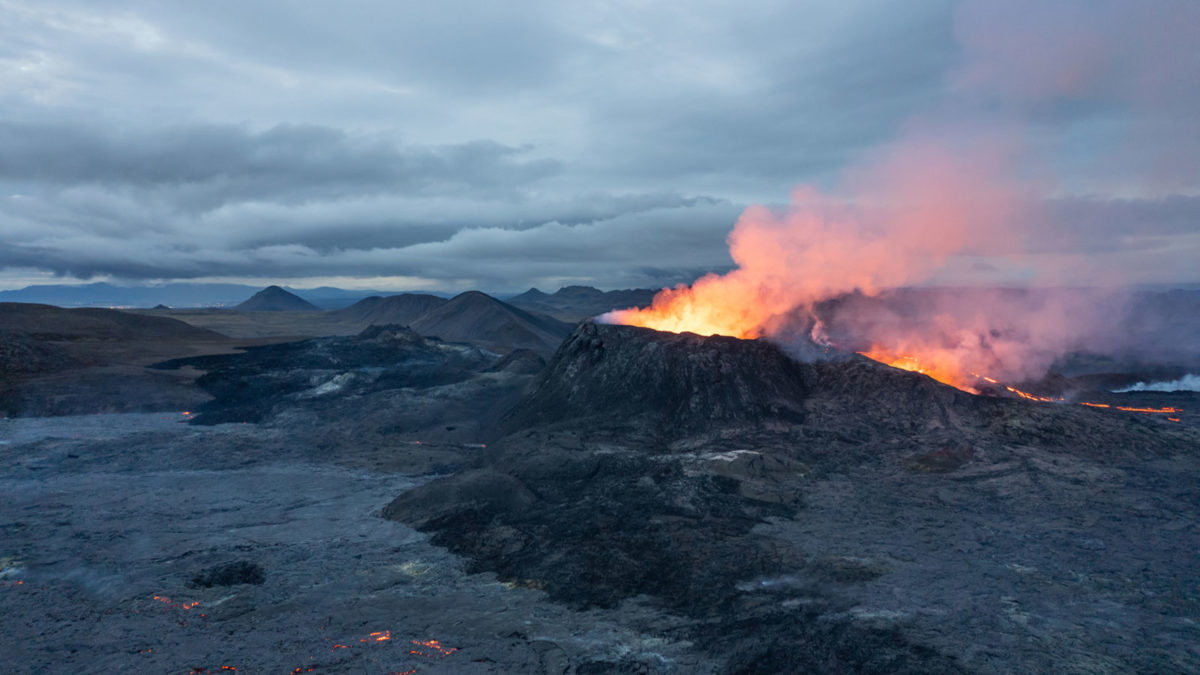
The news we had all been waiting for, none more so than Geography Tours Development Manager, Cath Rule – Iceland was open! So, flights were booked, bags packed and it was time for Cath to go and realise a lifelong dream. “Fagradalsfjalla here I come!”
“I was so filled with excitement I could barely sit still on the flight to Iceland. I was on my way to fulfil a dream, to witness an erupting volcano with my own eyes.
The sky was clear as we got closer to Keflavik and the view of Iceland’s south coast from the air was spectacular but so far no sighting of Iceland’s newest natural attraction, the volcano at Fagradalsfjall.
Once we’d landed there was only one thing on my mind and that was to get to Fagradallsfjall as soon as possible. As you walk towards the Natthagi Valley your initial view is blocked by an artificial earth barrier, built in an attempt to direct the flow of lava. Only once you are on top of the barrier does the full impact of the view reveal itself, and what a view.
The eruption had been ongoing for 5 months and I’d followed the activity closely both on social media and the official web cams. Nothing, however, prepared me for what I saw. The valley ahead was filled with cooled lava, sprawled across its width. The newly formed rock was a shiny, deep black. There was a haze of white gas drifting up from the surface. Where the lava had cooled it created twisted and contorted forms: ribbons of pahoehoe lava, mounds of blocky a’a. In the distance lava spilled over cliffs like a frozen black waterfall. This first view took my breath away and I never quite got it back (not just because there were some steep climbs involved).
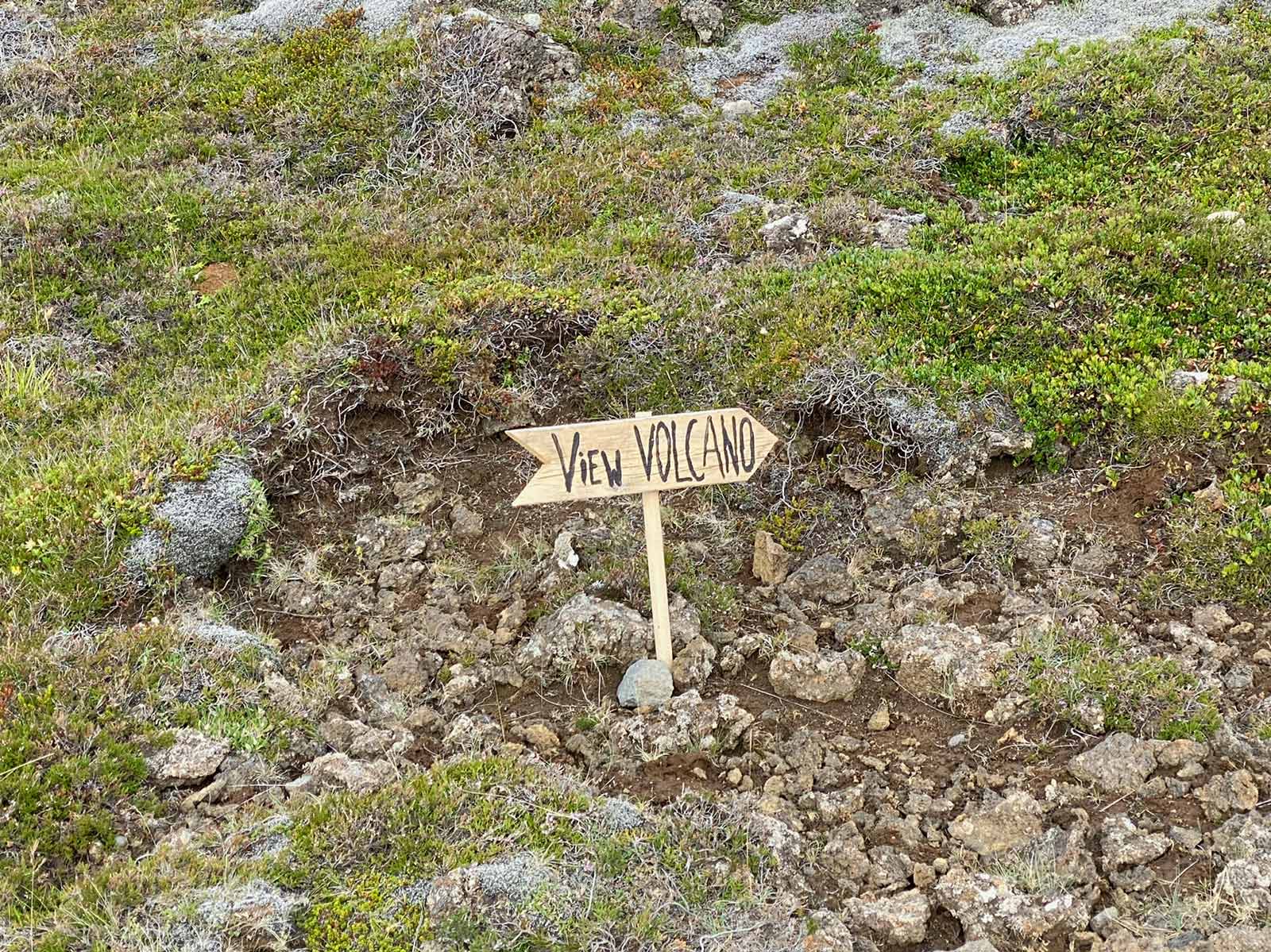
I was open mouthed as we followed the sides of the valley, walking along the edges of the newly formed lava field, some of the newest rock on earth. Towards the centre of the valley there was the occasional orange glow amongst the black, a glimpse of the still hot lava flowing mainly below the surface. In the silence you could hear gas bubbles popping.
Continuing uphill took us closer to the crater. The lava seemed deeper in this part of the valley and the black surface was patchworked with yellow and white deposits.
The view of the crater was like something from a fantasy world. Its blackened sides rose up from the haze filled lava field and dark smoke belched from its depths. Hidden just behind its flanks was a pool of molten lava, ominously building but not yet ready to make it over the rim.
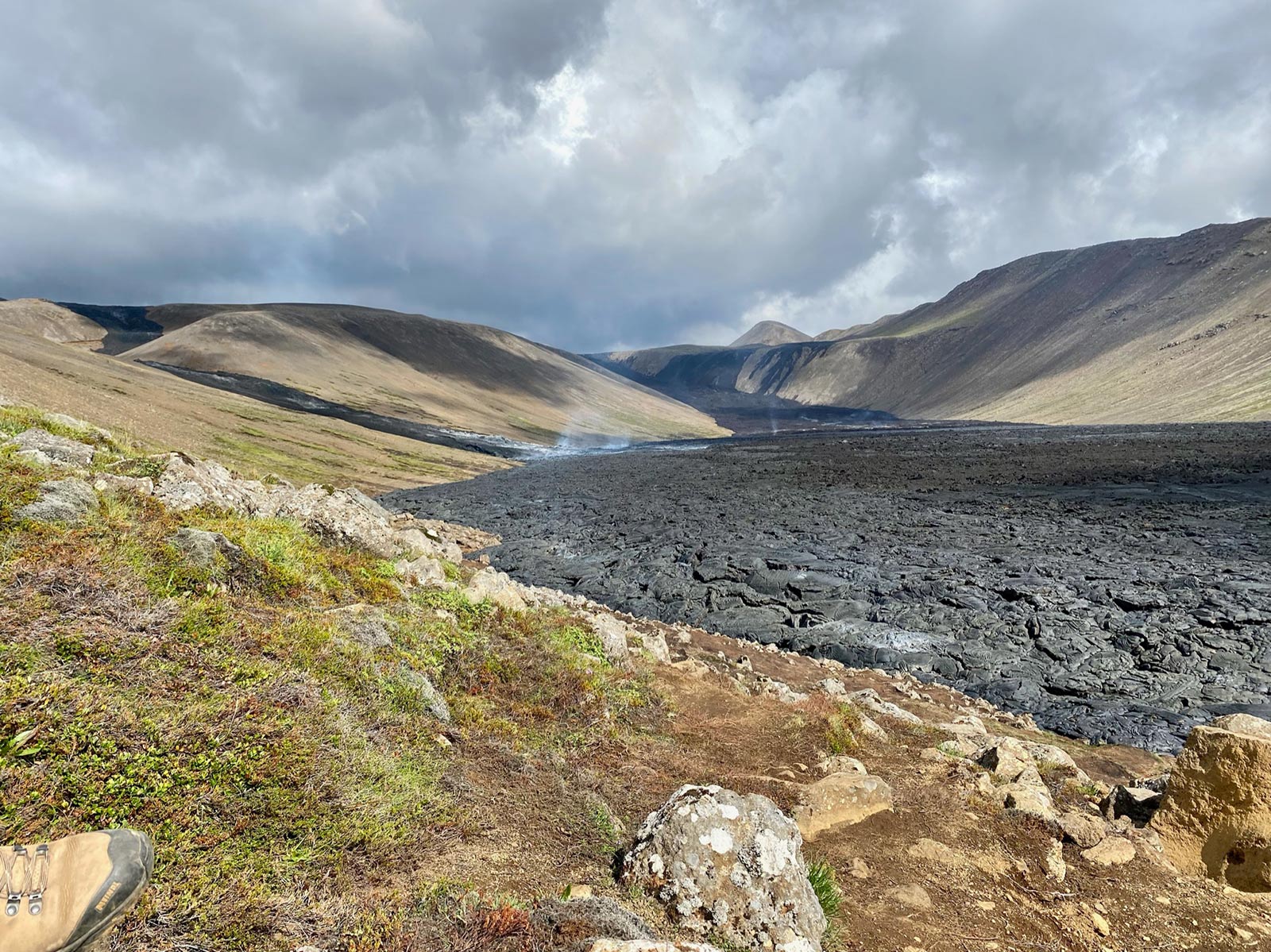
Whilst we were on the ground the volcano was quiet with no active lava flow but things were about to change. That evening we were due to take a flight over the volcano and it just so happened to coincided with the volcano spectacularly springing back to life. The volcano from the ground was stunning; from the air it was truly spectacular.
Sometimes when you build something up so much in your mind the reality is a bit disappointing. This most definitely was not one of those occasions. Witnessing molten lava flow out of the earth was an extraordinary and emotional experience. The intense glow of the streams of orange lava contrasting with the black sea of basalt rock was overwhelming.
I thought I knew a fair bit about volcanoes, after all I’d been teaching about them for more years than I’d care to mention, but I was just amazed by what I saw. This type of eruption is referred to as effusive and the world gentle is often used in its description.
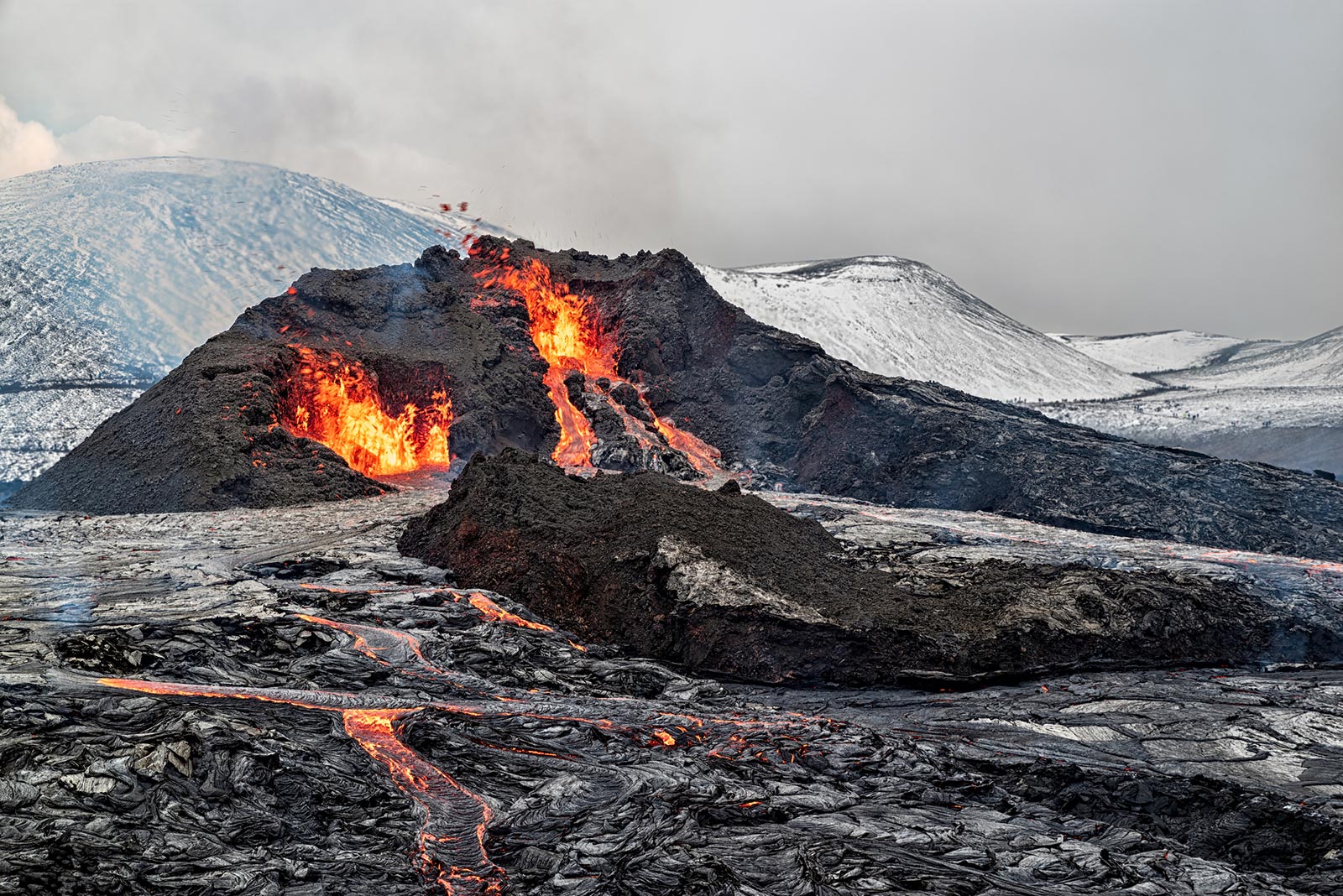
It might be a small eruption in comparison to previous events in Iceland, but gentle it most certainly was not. The lava-filled crater boiled and bubbled with violent aggression, whilst the molten lava flows spewed from the crater with the speed of a torrential river. It was absolutely magnificent: raw, powerful and a reminder of the sheer force of nature.
After six months of activity there have been no active lava flows detected since late September. It is too soon to declare the eruption officially over as the volcano may just be following the pattern of other volcanoes on the peninsula, known to produce very long eruptions, sometimes with extended pauses. Earthquakes are still being detected north of Fagradalsfjall which may indicate that the magma is trying to find a new way out.
The landscape of the valleys surrounding the crater has changed dramatically. Whilst the crater itself has not been officially named the new lava field is known as Fagradalshraun and it has grown to cover an area of 4.8 km².
Only time will tell if the eruption is over or has another chapter to write but for me my volcano pilgrimage is over, leaving memories to treasure of an astonishing experience and an urge to do it all over again should the chance arise.”
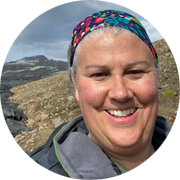
Catherine Rule
Geography Tours Development Manager
Former Geography Teacher & Year Head
Iceland is one of our most popular geography trip destinations, and it’s easy to see why! Take a look at the fantastic excursions, sample itineraries and accommodation options on offer…